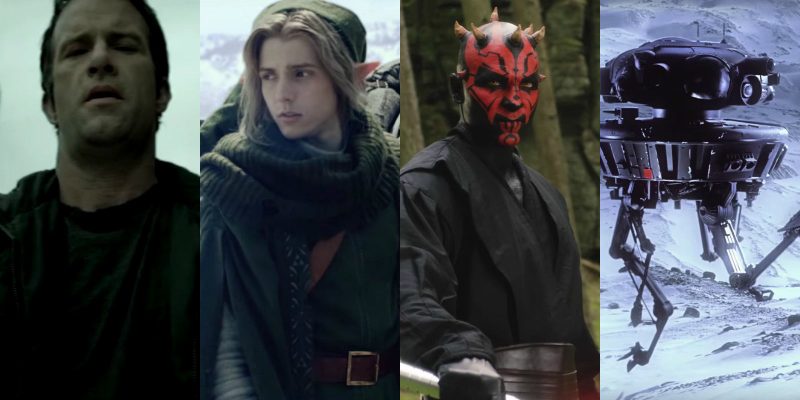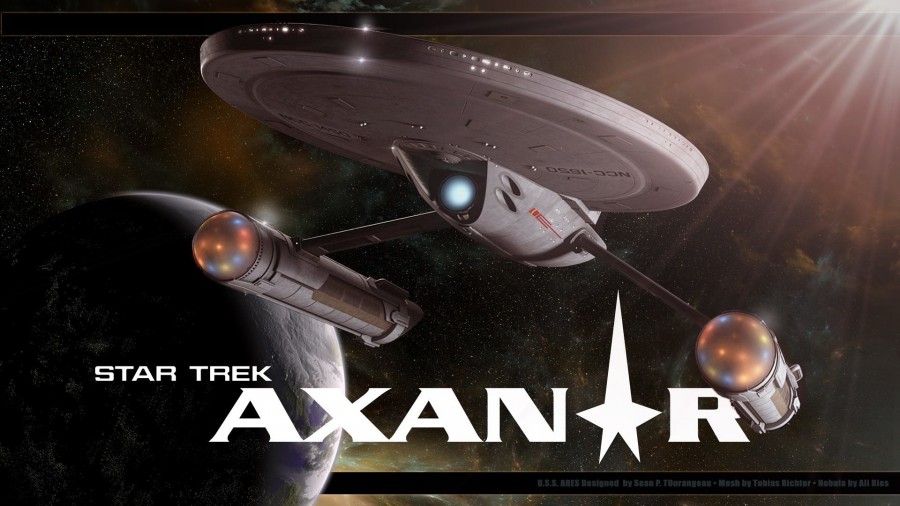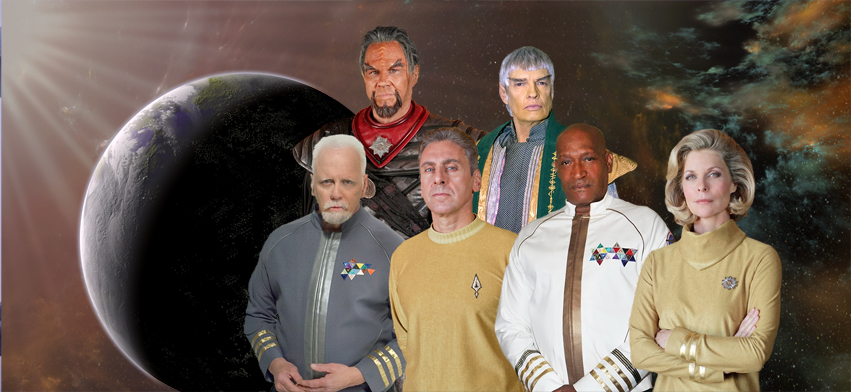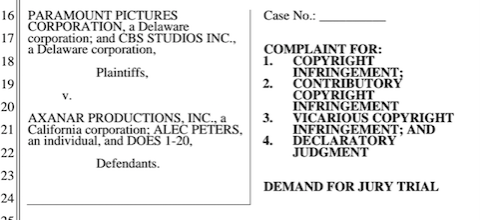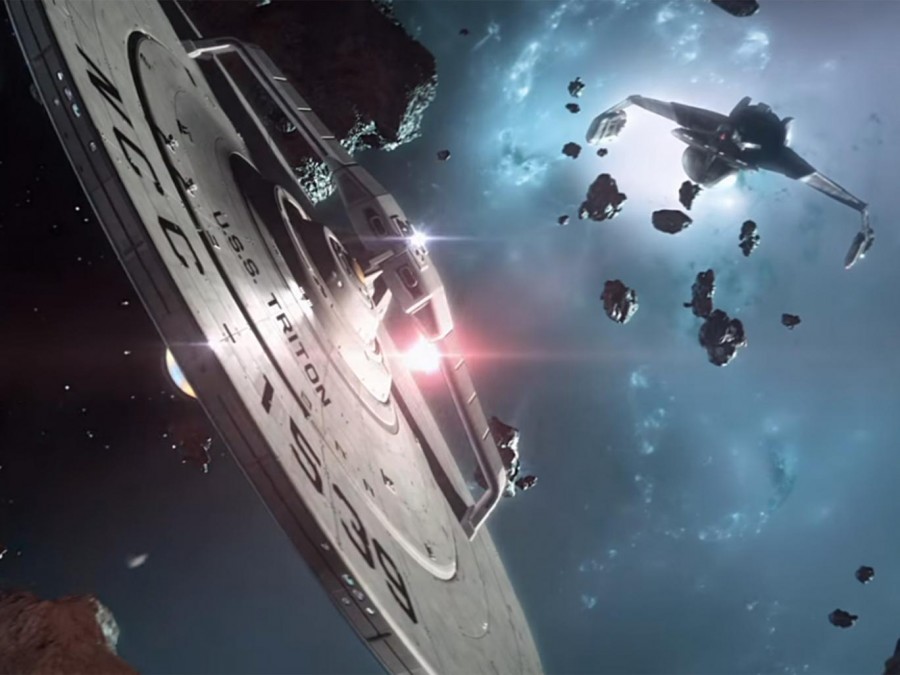Geekery: Axanar Returns


The crowdfunded fan film is being completed – come read about out all the details!
This is a guest guest column by Jonathan Lane.
Star Trek. Star Wars. Harry Potter. Lord of the Rings. Marvel. DC. The one thing all of these franchises have in common (other than major blockbuster movies, runaway merchandising, video game tie-ins, Lego sets, comic books, etc.) is FANS…rabid, obsessed, passionate fans.
And where there are fans, there’s cosplay, fan art, fan fiction, and most recently, fan films. I’m not talking about fans putting on Halloween costumes and fumbling their way through home movies with poorly written scripts and painful acting. I am talking about fan films that look, sound, and feel almost like productions being released by the major studios.
Oh sure, these fan films aren’t perfect. You can’t do for ten thousand or a hundred thousand dollars what you can do for a hundred million. But if you haven’t seen fan films lately, you’re in for a surprise.
One of the reasons for the vastly improving quality of fan-made productions is the recent drop in cost of high-quality camera and sound equipment, along with editing and 3D software. Also, fan producers themselves are becoming more savvy. Many have taken film production courses, made contacts with professionals to get advice, and pool resources to improve the quality of things like their costumes, make-up, visual effects, and music. In some cases, actors who had appeared in original studio-released movies and TV series were reprising their roles in fan films, including Star Trek’s George Takei playing Sulu and Walter Koenig playing Chekov in fan productions Star Trek: New Voyages and Star Trek: Of Gods and Men.
And just as fan films were taking off in both quality and quantity, along came Kickstarter and other crowd-funding services. Suddenly, these fans that were usually operating on a shoestring budget found themselves with access to potentially tens or even hundreds of thousands of dollars!
How did the big Hollywood studios feel about this? Well, it depended on the studio. Lucasfilm embraced fan films so much that they included one of the earliest Star Wars fan films, Troops, on their Special Edition Blu-ray release. They also had annual contests for the best Star Wars fan film. On the other hand, when Justin Zagri launched a $40,000 Kickstarter to fund his amazing Harry Potter fan film, Severus Snape and the Marauders (a must see!), he received a call from Warner Brothers telling him to take down his Kickstarter page. The studio would still allow him to make his fan film, but he could not generate donations through public crowd-funding or distribute perks. Relieved not to be told to shut down completely, Zagri finished his passion project with private funding.
And then there was Axanar…
This Star Trek fan production was the brainchild of uber-Trekkie (and Warhammer enthusiast) Alec Peters, a man who had build up a successful company called Propworx to collect and auction off screen-used props, costumes, and set pieces. And one of his prized possessions was the costume worn by actor Steve Inhat playing the character of Garth of Izar in the 1969 Star Trek episode “Whom Gods Destroy.” Garth was Kirk’s hero, a legendary Starfleet captain who was the role model for a whole generation of starship commanders. His victory at the battle of Axanar was required reading at Starfleet Academy. Yet as important as we know Garth was, we never again heard about him. So who was Garth, and why was he Kirk’s hero?
This question led to a years-long development of a fan film script that ended up getting input from none other than David Gerrold, the writer who created the tribbles in one of Star Trek’s most popular episodes from 1967. Alec’ script would tell the story of Garth’s victory at the Battle of Axanar, which ended the Four Years War between the United Federation of Planets and the Klingon Empire twenty years before Captain Kirk’s historic five-year mission. It would be a character-driven war story in the vein of classic films like Midway.
Before long, Alec’s project had taken on a life of its own. Alec’s acting coach, the late Richard Hatch (of Battlestar Galactica fame) helped to bring on professional actors who had appeared in Star Trek and other sci-fi series…including Tony Todd, Gary Graham, J.G. Hertzler, and Kate Vernon. Hatch himself took on the role of the Klingon Commander Kharn, and Gary Graham reprised his character of Vulcan Ambassador Soval from Star Trek: Enterprise.
Axanar caught fire among Star Trek fans. An initial Kickstarter campaign in 2014 raised $101,000 to produce a 20-minute “proof of concept” film called Prelude to Axanar. Presented as a fictional documentary recounting the months leading up to the Battle of Axanar, SyFy itself called Prelude to Axanar “…better than anything Abrams is doing.”
Looking like it could have been produced at a cost of millions by a Hollywood studio, this hundred thousand dollar fan film helped to generate more than $1.2 million dollars in additional crowd-funded donations over the next year. The goal: make the 90-minute sequel, a full-length dramatic feature film.
It was at this point that CBS and Paramount Studios began to take serious notice of this project. And when Alec released a sample 3-minute “Vulcan scene” from the final feature in the summer of 2015, using elaborate VFX to create an entire cityscape behind two actors walking in front of a green screen, the studios’ concerns multiplied. Alec also took a significant portion of that $1.2 million to create a professional-quality studio in Valencia California to hold elaborate sets and later be used not just to film a 90-minute Axanar movie but also be rented out to other fan productions.
At the end of 2015, CBS and Paramount jointly sued Alec Peters and Axanar Productions for copyright infringement, claiming damages in the tens of millions of dollars.
In fairness to Alec, Star Trek fan films had existed unchallenged by the studio rights holders for nearly five decades. Recent Star Trek fan productions had created multi-year series with dozens of episodes featuring professional actors, writers, directors, editors, costumers, make-up people, composers, and VFX artists. Some had gone so far as to create studios full of sets that meticulously replicated those that the original Star Trek had been filmed on back in the 1960s. One fan film, Star Trek: Renegades, had a crowd-funded budget of $375,000, used multiple Star Trek veteran actors, and even hosted a red carpet premiere at the Crest Theater in Los Angeles in 2015 (complete with limousines and paparazzi).
For CBS and Paramount, however, the “space race” of one fan film trying to outdo another was getting out of hand, and an example had to be made. Alec actually met with CBS executives on four separate occasions as he developed his project and was never given any guidance nor told to stop. They only said that if he crossed a line, they would let him know. But the studios never contacted Alec before the lawsuit was filed. He never received a cease and desist letter. Instead, the studios jumped straight to the multi-million dollar lawsuit.
The studios had likely expected to scare the living daylights out of Alec and send him scurrying. But at the time of the filing of the lawsuit, his production had been only 30 days from the start of filming, with Robert Meyer Burnett (who had written and directed the Star Trek cult classic “Free Enterprise”) set to direct the first third of the full Axanar feature. And had Alec simply surrendered, he was still looking at a judgment that would have bankrupted him and possibly even burdened his cast and crew members with similar penalties…
Unfortunately for the studios, they picked the wrong Trekkie to try to make the first example of. Alec and his legal team pushed back hard, believing they had a solid “fair use” defense and an argument for non-willful infringement because of the studios’ history of allowing fans to make their films.
Over the course of the next 13 months, Alec and his legal team made CBS and Paramount fight for every inch, all the while running up the studios’ own legal bills (estimated by some as approaching a million dollars!) while suffering through some very bad press as they sued their own fans. Even J.J. Abrams himself and Star Trek Beyond director Justin Lin came out in support of Alec Peters and Axanar.
After a year of pre-trail tooth-and-nail confrontation with thousands of pages of documentation filed with the Ninth Circuit Federal Court, and just two weeks before the trial was set to begin, CBS and Paramount reached a settlement with Alec and Axanar Productions.
The result? The Axanar fan film will finally get made, although in a shorter version. Restricted to following new fan film guidelines released by CBS and Paramount during the trial (but still allowed to use the same professional actors), Alec is now limited to presenting Axanar as two 15-minute films with no sequels. Alec and his team have decided to make their two episodes in a similar documentary format as Prelude. “This is the best way to tell the most story,” says Alec. “I think everyone was blown away by the documentary format and the whole idea of a series from the Federation Historical Society called ‘The Four Years War.’ We’ll tell the story of the actual battle, which has some great moments, some insane starship battles, and a surprise or two that people will love.”
We are raising funds for the movie studio that we built with the donations of 15,000 donors to make Axanar a reality. And now we are launching an Indiegogo campaign to make it the first fan-funded movie studio, where we can make all sorts of great genre content with student, fan-film and independent film makers. I hope you will check out our project and donate to something really special.


